Common Core Aligned Games
Primary tabs
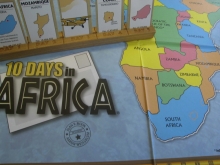 |
10 Days in Africa5.3 - European Exploration and Effects You have 10 Days in Africa touring by airplane, automobile and on foot. Chart you course from start to finish using destination and transportation tiles. With a little luck and clever planning, you just might outmaneuver your fellow travelers. The first traveler to make connections for a ten day journey wins the game! |
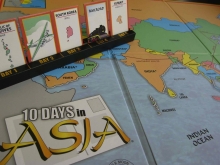 |
10 Days in Asia6.1 - Modern Eastern Hemisphere Geography You have 10 Days in Asia touring by train, airplane, ship and on foot. Chart you course from start to finish using destination and transportation tiles. With a little luck and clever planning, you just might outmaneuver your fellow travelers. The first traveler to make connections for a ten day journey wins the game! |
|
|
10 Days in Europe6.1 - Modern Eastern Hemisphere Geography You have 10 Days in Europe touring by plane, ship, or on foot. Chart your course from start to finish using destination and transportation tiles. With a little luck and clever planning, you just might outmaneuver your fellow travelers. The first traveler to make connections for a ten day journey wins the game. |
 |
10 Days in the Americas5.4 - Geography of Western Hemisphere Gather your sunglasses, snowshoes and mosquito spray - it's time to travel to new destinations with the 10 Days Series - the Americas! Players use destination and transportation tiles to chart a course through North, Central and South America and the Caribbean — touring by airplane, cruise ship or on foot. With a little luck and clever planning, you just might outmaneuver your fellow travelers and be the first to make connections for a complete ten day journey! |
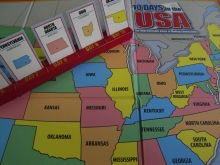 |
10 Days in the USA5.4 - Geography of Western Hemisphere You have 10 Days in the USA touring by plane, car and on foot. Chart you course from start to finish using destination and transportation tiles. With a little luck and clever planning, you just might outmaneuver your fellow travelers. The first traveler to make connections for a ten day journey wins the game! |
|
|
13 Days: The Cuban Missile Crisis10.6 - Unresolved Global Conflict 1945-1991 13 Days: The Cuban Missile Crisis is a nail-biting, theme saturated two-player strategy game about the Cuban Missile Crisis. Your fate is determined by how well you deal with the inherent dilemmas of the game, and the conflict. 1) Will you push to gain prestige at the risk of escalating the crisis to global nuclear war? 2) How do you best manage your hand of cards to further your own plans while depriving your opponent of options? Work out these dilemmas in order to emerge as victor of the Cuban Missile Crisis after thirteen suspenseful days. 13 Days: The Cuban Missile Crisis is a meaty filler utilizing the card-driven game mechanics. Rich with history, yet accessible to gamers with no prior knowledge of the crisis. It is targeted specifically at catering to two groups of gamers: the enthusiasts that just don't have the time they used to and the curious newcomers that are scared off by the heavy commitment and long play times of the classics in the genre. |
|
|
1775: Rebellion7.3 - American Independence In 1775: Rebellion, players take the roles of the American Continental Army and Patriots against the British Army and the Loyalists. Each side tries to control the colonies, provinces and territories. They call on the aid of Native Americans, as well as the German Hessians and French Army in order to successfully birth a revolution or quell the rebellion. The four factions each use their own deck of cards to move their units into postions. Battles are resolved quickly with custom dice. If you can control an entire colony, province or territory you raise a flag. When the game ends with the signing of the Treaty of Paris, the side with the most flag markers is the winner. |
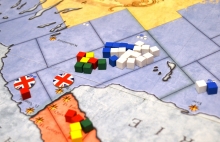 |
1812: The Invasion of Canada7.5 - The Constitution in Practice The year is 1812. War is raging across Europe and Russia. Napoleon, emperor of France, is seeking to dominate Europe through conquest. France’s enemies, led by England, are engaged in a desperate struggle to defeat Napoleon. England, in dire need of men, is impressing men to serve in its navy. Included are Americans who are pressed into service at gunpoint. The young American nation objects. Eager to defend its sovereign rights and to strengthen its position in North America, the United States declares war on Britain on June 18, 1812. Taking advantage of the British Army being occupied in its struggles against Napoleon, American forces invade Canada in order to drive the British from its last remaining colony on North American soil. Surprised, Britain reels from the attack and now has to face another enemy threat on another front. In 1812 - The Invasion of Canada, players take on one of the roles of the major factions that took part in the War of 1812. On the British side these are represented by the British Regulars (Redcoats), Canadian Militia and Native Americans; and the American Regular Army and American Militia comprise the American players. Players for each side will cooperate with each other in order to plan and conduct their campaigns. Each side will attempt to capture Objective Areas on the map. When a truce is called, the side that controls the most enemy Objective Areas wins. |
 |
1960: The Making of the President12.G4 - Political and Civic Participation All elections are turning points, but the presidential election of 1960 holds a special place in American history. The 1950s had been a period of unparalleled economic growth and US global power. Richard Nixon served as President Eisenhower's Vice President through most of the period. Nixon's humble origins gave him a common touch that appealed to the small town, idyllic America encompassed by the spirit of the 1950s. John F. Kennedy, was Nixon's mirror image: charming, Harvard educated and the scion of an American political dynasty. Kennedy challenged Americans to confront the uncertainties and tumult that were already emerging in 1960. He set his vision not in the past, but on new frontiers. In 1960: The Making of the President, you take on the role of one of these great protagonists vying to lead America through an era of turbulent change. The candidates must contend with all the great issues of the day, from the Cold War to civil rights to voters' pocket books. This is an election that will turn on positioning and momentum. The contest is fought on an electoral map of the United States as it stood in 1960. Using a card-driven game system, all the major events which shaped the campaign are represented: Nixon's lazy shave, President Eisenhower's late endorsement, and the 'Catholic question' are all specific event cards. The famous televised debates are also an important component of gameplay. As with a real election campaign, the challenge is to adapt your game plan as the ground shifts out from under you. There are never enough resources or time to do everything, but you need to make the tough calls to propel yourself into the White House. This fast-playing strategy game for two players challenges you to relive the most significant political contest of the Twentieth Century. Will you recreate history, or rewrite it? 1960: The Making of the President provides you the opportunity to do both. |
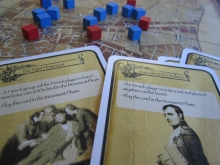 |
2 de Mayo10.2 - Enlightenment, Revolution, and Nationalism 2 de Mayo is an historical simulation of the terrible incidents that took place in Madrid on May 2, 1808. On that date, civilians in Madrid , along with a few Spanish army units, rebelled against the French occupation troops of Napoleon. 2 de Mayo is a bilingual (English and Spanish) boardgame for two players, in which each player controls the forces of one side, either Spanish or French. The game lasts ten turns and takes about 20-30 minutes to play. At the end of Turn 10, the French player achieves victory if all the Spanish forces have been eliminated, all the access areas to Madrid are French garrisoned, and the player has not lost four or more cubes. If the French victory conditions are not met, the Spanish player wins. |
|
|
3x4=SWAT! (3·4 = Klatsch!)3 Math 3 - Multiplication and Division with Units... A player chooses a numbered flower on his/her turn. ("Let's multiply by fives.") When everyone is ready, roll a die, and quickly multiply the numbers on each. Be the first to swat the fly card with the correct product to earn a wooden fly token. Collect eight tokens to win. An advanced variant uses two ten sided dice and all of the bugs, with students quickly multiplying the results of the dice and swatting the answer. |
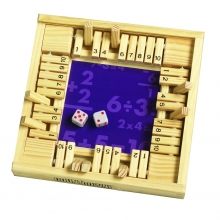 |
4 Way Countdown1 Math 1 - Sums and Differences to 10 | 3 Math 1 - Properties of Multiplication and... | K Math 1 - Numbers to 10 | PK.CC - Counting & Cardinality | Pre-K Math 1 - Counting to 5 | 1.NBT - Number & Operations in Base Ten | 2 Math 6 - Foundations of Multiplication and... Players compete to achieve all numbers from 1 through 10 using 2 dice and simple math. Score is marked with wooden pegs that are flipped when a number is achieved. Basically a four player version of Shut the Box. But it includes some variation. Players may not use the two dice as separate numbers to flip two pegs. Instead they use the two numbers with a basic math operand to create a single number to choose a peg. Example: Dice roll 2 and 6 yields 2 + 6 = 8 6 – 2 = 4 6 ÷ 2 = 3 There are only 10 pegs so 6 x 2 = 12 is out. |
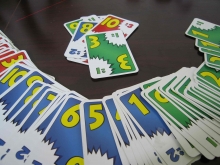 |
7 Ate 92 Math 1 - Sums and Differences to 20 It’s as easy as 1, 2, 3! Players add, or subtract, 1, 2, or 3 to the number on the top card on the pile to determine if they have a card that can be played next. Sounds simple, but with everyone playing simultaneously, the options are constantly changing. The first player out of cards wins! |
|
|
A Distant Plain11.11 - The US in a Globalizing World A Distant Plain is a 1- to 4-player board game depicting insurgent and counterinsurgent (COIN) conflict in modern Afghanistan. Each player takes the role of a Faction seeking to guide Afghan affairs: the international Coalition, the Afghan Government, the Islamist Taliban, or narco-trafficking Warlords. Using military, political, and economic actions and exploiting various events, players build and maneuver forces to influence or control the population, extract resources, or otherwise achieve their Faction’s aims. A deck of cards regulates turn order, events, victory checks, and other processes. |
|
|
A Few Acres of Snow5.3 - European Exploration and Effects A war fought at the edge of two mighty empires. For over one hundred and fifty years Britain and France were locked in a struggle for domination of North America. Thousands of miles from their homes, settlers and soldiers were faced with impenetrable forests, unpredictable American tribes, and formidable distances. Despite these obstacles they were able to engage in bitter warfare, with the British ultimately taking the prize of Quebec. A Few Acres of Snow is a two-player game that allows you to recreate this contest. You can change the course of history by your decisions. A Few Acres of Snow takes an innovative approach to the subject, using cards to represent locations and manpower. As the game progresses you add to your selection of cards, increasing the range of actions available to you. There are many strategies to be explored. How quickly should you build up your forces, do you employ Native Americans, what energy should be expended on your economy? The game is about more than just fighting – you must successfully colonize the land to have a chance. |
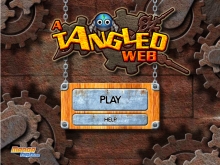 |
A Tangled WebGEO M1 - Congruence, Proof, and Constructions | 4 Math 4 - Angle Measure and Plane Figures | GEO M5 - Circles with and Without Coordinates In this math game you control a tiny robotic spider named Itzi, who lives with his family at the top of a strange old grandfather clock. One dark night, the clock struck midnight with a mighty mechanical ‘Clang!’. So loud was the noise that the whole clock rattled and shook, sending Itzi and his family tumbling down through its rusty innards. Now Itzi must climb back up the clock, rescue his stranded family members, and return home! On each level Itzi must find a safe path through an intricate maze of tangled webs, solving cunning angle puzzles as he goes. You’ll need brains and bravery to succeed, so get going – Itzi’s family are depending on you! |
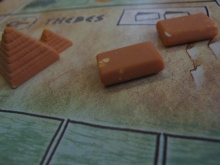 |
Amun-Re6.3 - Early River Valley Civilizations Everyone knows of the pyramids on the Nile - eternal monuments of a powerful and beautiful culture, that can still take our breath away. The pharaohs choose their sites, build their pyramids and thank Amun Re and the other Gods for their bounty. Each player wants, as pharaoh, to build the most pyramids. To accomplish this, he must first acquire a province, where he can trade and farm. With his profits, he can buy new provinces and build stones to erect pyramids. For all his actions, the player must make clever use of his power cards. And always offer appropriate sacrifices to Amun Re. But, will it be enough? Whatever happens, a player must always keep his eyes on his goal; the building of eternal pyramids. For when a player loses sight of his goal, he will surely loose the game! |
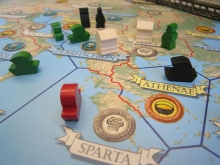 |
Antike9.3 - Classical Civlizations Antike is a challenging strategy game about the evolution and competition of ancient civilizations. The name of the game in German means "age of antiquity". Ancient nations found cities, erect temples, sail the seas, do battle, and make scientific progress. Their legions and galleys open new regions for settlement, and defend against the enemy. For action in two different ancient operational theaters, players choose a nation from among the Greeks, Romans, Germanic Tribes, Phoenicians, Carthinians, Persians, Arabs, Egyptians and Babylonians. Antike is not a game of conquest. The ancient nations do not compete to establish the biggest kingdom. Instead, each nation tries to win kings, scholars, generals, citizens and navigators over to its side. The nation that succeeds in gaining a given number of ancient personages first wins the game. Lead an ancient nation to victory! But watch out for your enemies, who will try to destroy your temples! |
|
|
Aunt Trudel's Treasures3 Math 2 - Place Value and Problem Solving with... Are you ready to pick up a bargain? You can get as many goods as you want, but you can't take more than Aunt Trudel will allow you to take – and she's a bit of a weirdo when it comes to making sales. If your goods weigh more than the goods that Aunt Trudel has set aside, then you get nothing! In Aunt Trudel's Treasures, players shop from a 5x5 array of goods, each with their own basket. One item – a coat hanger, a vase, a dollhouse couch – is placed on most of the spaces in the array, while a few spaces are covered with vouchers. Three items are set aside at random, and those are the goods that Aunt Trudel will weigh at checkout to see whether you'd met her tough standards. All players start on the same corner of the game board with a shopping basket. On a turn, a player rolls a die, moves her basket that many spaces around the game board in a clockwise direction, then picks up one item (or voucher) from the row that her basket is next to and places it in her basket. If a player's basket lands on the same location as an opponent's basket, then the player can take an item from the opponent instead. If a player picks up a voucher, she can exchange it later for another item on the board, putting the voucher in its place, in addition to taking an item. The first player to circle the board has the option of then moving counter-clockwise to pick up more goods; everyone else is finished once they circle the game board. Each player in turn then weighs her goods against Aunt Trudel's holdings using the funky cardboard scale included in the box. If your goods weight more than Trudel's, you're out; if not, then you're still in the game. Of those players, whoever has the heaviest goods wins! |
|
|
Automobile11.5 - Industrialization and Urbanization Automobile is a 3-5 player game that bears a modern setting when compared to most of Wallace’s releases. Players are competing in the U.S. auto industry in the early 20th century, purchasing factories that turn out low-, medium- and high-valued vehicles, starting with the 1893 Duryea and moving through history from there. Each player knows a portion of the market demand each round and must make his purchasing and manufacturing decisions based on the information. Players can fund distributors across the country, but if they don’t supply distributors with vehicles to sell, they go bankrupt, taking your investment with them. Alternatively, players can drop the prices on their cars to move their market share, or even temporarily improve sales rates at the cost of research. Special action spaces are available that give a player a one-turn special ability with the actions provided by Ford, Durant, Kettering, and others some what related to their actual business history. As newer models make their way onto the market, they sell at the expense of the older models. Older factories give inefficiency cubes as time passes, encouraging you to keep pace with technology. To get money, you need to build cars with your factories, but if you build more than there is demand theylose not only the money spend to make them, but gain inefficiency cubes that hurt them for the rest of the game. Whoever manages their car factories the best over this 120-150 minute game will win. |
|
|
Banana PuzzleK D4 - Plants | PK D4 - Plants A layered puzzle that shows the growth cycle of a banana |
|
|
Bazaar6 Math 4 - Expressions and Equations The components of Bazaar include a whole bunch of little chips, in five colors. At the start of the game, two equation cards are randomly chosen. Each equation card has five equations on it, for a total of ten equations that will be in effect for the duration of the game. The equations state equivalences between certain combinations of colors, for example: Red = Green Green Green Yellow = Blue Blue Red Four target cards are turned up, each with some combination of five chips represented on the target card (so a typical target card might be Green Green Blue Blue Blue). On your turn, you roll a colored die to randomly pick a colored chip for yourself, or you can make one exchange of your colored chips based on the equations. The goal is to end up with the right combination of chips to get one of the target cards. You want to do this quickly – and even more importantly, with as few chips left over as possible after you've purchased the target card – because this is how you score points. |
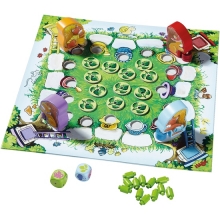 |
Bennis Colorful FlowersPK D4 - Plants Squirrel Benny and his friends want to have the prettiest flower garden in the whole squirrel wood, but first they have to plant the seeds. Watch out, though, as each squirrel can plant seeds only in planters with matching colors. Once watered, the little plants will grow and even start to flourish when the sun shines. Players stick their seed discs onto each squirrel's stem. If a player's squirrel reaches a matching-colored planter with a free space in it, she can slide her seed disc into the planter. Now it's all about nurturing and caring for the seeds. This is done with the symbol dice: watering can, rain cloud or sun – they all have different effects on the little plants' growth. The plants grow after being watered and they start to flower when the sun shines. Your goal in Bennis bunte Blumen is to be the first to reach one's tree fort after the work is done. |
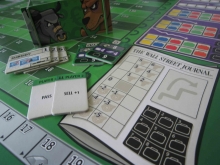 |
Black Friday8.5 - The Great Depression When you invest in the stock exchange, you want to buy low and sell high! But it does not always go that way, so sometimes you will need subsidies from the government to keep investing. To keep the stocks you have acquired on the rise, you must convince other players they have value so they will buy those stocks and keep your profits soaring. Now the signs suddenly show that there could be a coming burst. You must decide quickly if the signs are right and sell your holdings or wait a bit longer for them to rise further and increase your profits. In the end, of course, the player who has earned the most money (in this case in the form of gold reserves) will win the game! Times again the good taxpayer takes over the subsidies. A fast-moving game with thrills and excitement as players try to outwit each other for the highest gains. But the bust can come suddenly and ruin all - even the fortunes of the other players. A frighteningly realistic game that reflects the real dangers and opportunities of investing in the stock market. Bring your steel nerves and money to see how you fare! |
 |
BolidePRE-CALC M2 - Vectors and Matrices Take total control of your car by the innovative move game rule! Work out the best routes along the track and push you car at the speed you want, racing opponents and making breathtaking overtakings or extreme brakings! But make sure you preserve your engine and tires for the last part of the race! Move on to the advanced level! Besides your driving skills, you will have to demonstrate your strategic abilities by choosing the best tires, by deciding between pit stop tactics or long race ones and by identifying the optimum set-up to push your car ahead of all others! Furthermore... unforeseen events and risky situations, ruled by the die, will add a touch of the unexpected to the race, improving the level of simulation and play. Do you want to be a legendary driver? Become a part of Bolide history... |
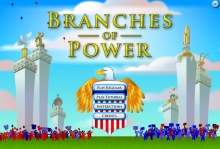 |
Branches of Power12.G1 - Foundations of American Democracy | 12.G5 - Public Policy | 7.5 - The Constitution in Practice Do you like running things? Branches of Power allows you to do something that no one else can: control all three branches of government! You'll have the power to write any laws you want about issues you choose. Careful, though, there's a lot to juggle when you're playing all three branches. Good luck! |
 |
Bunny BooPre-K Math 2 - Shapes "Pull a rabbit out of the box!" Bunny Peek-a-Boo is a 3D puzzle for young children. It comes with four big, sturdy wooden blocks, and kids arrange the blocks to match each challenge. Some challenges may look very similar, but the solution can be completely different depending on things like how far the ears of the rabbit stick out. With Bunny Peek-a-Boo, children will have fun discovering the world of 3D spatial perception, an important skill in reading and mathematical reasoning. Children can solve the 60 challenges or just play with the blocks as wooden toys, exploring concepts like above/below, inside/outside, visible/hidden, etc. |
|
|
Calculino1 Math 1 - Sums and Differences to 10 | K Math 1 - Numbers to 10 | 1 Math 2 - Introduction to Place Value Through... Help Calculino to take four blue, four yellow and four red starfishes on board as quickly as possible to begin the long journey through the ocean. A lot of concentration, strategy and mathematical knowledge is required. |
|
|
Can't Stop2 Math 1 - Sums and Differences to 20 | 7 Math 5 - Statistics and Probability | PRE-CALC M5 - Probability and Statistics In this Sid Sackson classic, players must press their luck with dice and choose combinations tactically to close out three columns. The board has one column for each possible total of two six-sided dice, but the number of spaces in each column varies: the more probable a total, the more spaces in that column and the more rolls it takes to complete. On their turn, a player rolls four dice and arranges them in duos: 1 4 5 6 can become 1+4 and 5+6 for 5 & 11, 1+5 and 4+6 for 6 & 10, or 1+6 and 4+5 for 7 & 9. The player places or advances progress markers in the open column(s) associated with their chosen totals, then chooses whether to roll again or end their turn and replace the progress markers with markers of their color. A player can only advance three different columns in a turn and cannot advance a column which any player has closed out by reaching the end space; if a roll doesn’t result in any legal plays, the turn ends with that turn’s progress lost. |
|
|
Cardline: Animals3 Math 2 - Place Value and Problem Solving with... | 5 M2A - Biodiversity in Rainforests of the... | 1 D8 - Animals and Habitats | 2 D8 - Insects Cardline: Animals is a card game played with approximately 100 cards. Both sides of each card depict an animal, its name, and its class (amphibian, mammal, etc.), while its average length, weight, and lifespan are printed on only one side of the card. For each game, players decide before playing whether they're comparing animal lengths, weights, or lifespans. At the start of the game, each player places a number of animal cards on the table in front of her with the characteristics hidden. One card is placed in the center of the table with its characteristics revealed. Players then take turns placing a card from their tableau in a row on the table; a player can place a card between any two other cards. After placing the card, the player reveals the characteristics on it. If the card was placed correctly – that is, with the particular characteristic in numerical order compared to all other cards on the table – the card stays in place; otherwise the card is removed from play and the player takes another card from the deck and adds it to her tableau. The first player to get rid of all her cards by placing them correctly wins. If multiple players go out in the same round, then everyone else is eliminated from play and each of those players are dealt one more card for another round of play. If only one player has no cards after a bonus round, she wins; otherwise play continues until a single player goes out. |
|
|
Cardline: Globetrotter 6.1 - Modern Eastern Hemisphere Geography | 5.4 - Geography of Western Hemisphere | 10.9 - Globalization and Changing Environment Players of Cardline: Globetrotter want to rid themselves of cards as quickly as they can, with the first player to have an empty hand winning the game. The game includes approximately 100 cards. Both sides of each card depict a country, while only one side of the card includes information about that country's size, population, GDP, and CO₂ emissions. For each game, players decide before playing which of these four country traits they'll compare. At the start of the game, each player places a number of country cards on the table in front of her with the characteristics hidden. One card is placed in the center of the table with its characteristics revealed. Players then take turns placing a card from their tableau in a row on the table; a player can place a card between any two other cards or at either end of the row. After placing the card, the player reveals the characteristics on it. If the card was placed correctly – that is, with the particular characteristic in numerical order compared to all other cards on the table – the card stays in place; otherwise the card is removed from play and the player takes another card from the deck and adds it to her tableau. The first player to get rid of all her cards by placing them correctly wins. If multiple players go out in the same round, then everyone else is eliminated from play and each of those players are dealt one more card for another round of play. If only one player has no cards after a bonus round, she wins; otherwise play continues until a single player goes out. |
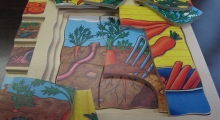 |
Carrot PuzzleK D4 - Plants | K D5 - Farms | PK D4 - Plants A layered puzzle that goies through the growth cycle of a carrot plant. |
|
|
Casa BananaPre-K Math 1 - Counting to 5 In the jungle, the animals are on the loose! The Monkey King invites his animal friends from around the world. The more animals ascend to the tree house, the more wobbly it becomes. Strategy is therefore asked – How do you get most of the animals on the tree house without collapsing it or the animals falling down. |
|
|
Chang Cheng9.7 - Ottoman Empire and Ming Dynasty More than 2500 years ago, the emperor of the Qin dynasty decided to protect his prolific provinces of northern China from the frequent barbaric invasions, building and joining several fortresses. Dress the clothes of one of the 4 officers of the emperor and try to increase you reputation to his eyes. Build parts of the Great Wall trying to defend the Chinese provinces and competing with the other players to gain the reputation that comes from protecting the most important ones. But beware of threat of Mongols that hangs near the border. All players have the same opportunities and the final victory depends exclusively on you! |
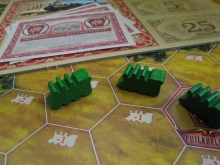 |
Chicago Express11.5 - Industrialization and Urbanization America's industrial boom would have been unthinkable without the railroads. It was only possible to open up this huge country by transporting the necessary materials over long distances. The industrial development of North America is therefore synonymous with the expansion of the railroad networks of individual companies, many of which were founded at the time with the help of investors who put up the necessary capital. The players try to make as much profit as possible at the end of the 19th century in America by buying shares in thriving railroad companies. There are three available options: auction a share, develop a company, or expand a railway. By the shrewd use of these choices, players can increase the value of the railroad companies, thus increasing their profits too. The player who invest most skillfully and manages to generate the highest profits wins the game. |
|
|
Churchill10.5 - Unresolved Global Conflict 1914-1945 | 11.8 - World War II The players in the game take on the roles of Churchill, Roosevelt, or Stalin as they maneuver against each over the course of 10 Conferences that determine who will lead the Allied forces, where those forces will be deployed, and how the Axis will be defeated. The player whose forces collectively have greater control over the surrendered Axis powers will win the peace and the game. Churchill is NOT a wargame, but a political conflict of cooperation and competition. While the game focuses on 10 of the historical conferences from 1943 till the end of the war these and much of this design should not be taken literally. Before and after each conference small groups of advisors and senior officials moved between the Allied capitals making the deals that drove the post war peace. Each conference sees one of a group of issues nominated for inclusion in the conference. The issues categories are: Theater leadership changes, directed offensives, production priorities, clandestine operations, political activity, and strategic warfare (A-bomb). Each of the historical conference cards independently puts some number of issues such as directed offensives or production priorities metaphorically put on the table, while the players nominate an additional 7 issues. The game display for this is a circular conference table that the three players sit around behind their 'seat'. Each player has a staff deck of named personages, such as Secretary Stimson and Anthony Eden that are randomly drawn to make your conference hand. A pre-conference round of cards gives leverage to the winner who then moves an issue toward their side of the table equal to the value of the card played. Play then proceeds with the conference where each player in turn plays a card on one of the issues in the center of the conference table moving it the value of the card toward his side of the table. Each card is an historical personage and they often have bonuses if played on a particular category of issue. Contesting an issue has you move an issue away from an Ally toward your own. At all times each player has his Head of State card (Roosevelt, Churchill, or Stalin) that can weigh in on any issue once per conference by discarding another card. Each use of your personage has a bonus and a potential penalty. Each time Roosevelt is used he may die and be replaced by Harry Truman. Churchill can have a heart attack and miss the next conference, while Stalin's paranoia may cause a mini-purge and reduce his side's effectiveness for the remainder of the conference. The net result of the conference play is players will 'win' various issues with the player who won the most issues gaining leverage in one of the bilateral global issues (UK versus USSR global issue is Free Europe versus Spheres of Influence). The game then moves into a post-conference phase where players implement the issues that they now control. These actions impact three basic game functions: clandestine operations, political activity, and military offensives. Clandestine operations has players try to establish political networks in conquered countries and colonies. Using a very simple mechanic of placing a network or removing an opponent's network, the historical ferment that occurred in Yugoslavia, France and across the world is simply simulated. A country or colony can only have one dominant side's network at any given time, and during political activity players can emplace friendly governments in exile that can be subsequently undermined and replaced if the supporting networks are later neutralized by one of your allies. Once this has all been sorted out, the military portion of the game keeps the score. There is a separate display that abstractly represents the major theaters of war, Western, Eastern, Mediterranean, Arctic (Murmansk convoys and Scandinavia), CBI, SW Pacific, Central Pacific, and Far East. Each of these tracks has a Allied front for which I am looking for some kind of 3D tank piece that advances toward Germany, Italy, and Japan. Using a very simple combat mechanic, each front tries to advance with Axis reserves deploying to oppose the various fronts. A successful offensive advances the front one space, although with overwhelming superiority a two-space breakthrough is possible. Naval operations are simply handled by requiring a defined level of support to advance into an amphibious entry space such as France (D-Day). When a front enters Germany, Italy or Japan they surrender, shutting down military operations, although clandestine and political activity continues until the end of the game. In the background is the development of the A-bomb and Soviet efforts to steal its secrets. If the A-bomb is available Japan can be forced to surrender sans a direct invasion. |
|
|
City Hall12.G4 - Political and Civic Participation City Hall sees players competing to become Mayor of New York City. They do this by attempting to be the most successful at both bringing people into the city as well as campaigning for the citizens' approval. Whoever best balances these two goals will win the election. There are seven offices within City Hall. These offices deal with a different aspect of building the city or campaigning, such as the Tax Assessor, Surveyor, or Zoning Board. In a round, each player will get to activate one of these offices. However, just because you activate an office doesn't mean you will get to use it. The other players will have an opportunity to use their influence to steal control of the office away from you. Keeping it will require countering with your own influence. However, you can instead let another player control that office this round and add their influence to your own, giving you a leg up on controlling things later on. In using these offices, players will buy land and build properties to create attractive neighborhoods that will bring the most people into the city – or they might place a factory next to an opponent's housing complex to drive people out. They will also tax their constituents to raise funds (with the option of sacrificing popularity to tax at higher rates), buy and sell influence to the Lobbyist, and campaign to increase their approval level. At the end of the game, the citizens of the city will vote based on which player brought them in and that player's approval level. Special interest groups will also collect votes for players based on certain goals, such as Wall Street backing the player with the most money. Whichever player has the most votes on election day will become Mayor of New York and appoint his or her opponents to the Sanitation Department. |
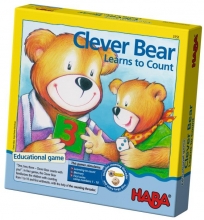 |
Clever Bear Learns to CountK Math 1 - Numbers to 10 Part of the "LernSpiel" (English = Learning Game) series from Haba, this is a series of counting games for young children using a very cute counting string with wooden bear, 4 sets of 1-10 counting tiles (marked with dice faces, numbers, fingers & cubes) and three different dice (marked with numbers, dice faces & fingers). |
|
|
Council of Verona9 M1 - How Do Authors Develop Complex Characters? The citizens of Verona have grown tired of the constant quarrel between the houses of Capulet and Montague. As ruler of the region, Prince Escalus has formed a council to help mediate the conflict and bring lasting peace to Verona. In Council of Verona, players take on the role of influential citizens of Verona and act to use their influence to either add characters to the council or cast them into exile. Through thoughtful hand management of their cards and clever placement of influence tokens, players gain victory points based upon the agendas of the characters at the end of the game. The player with the most victory points wins! We've all heard the story of Romeo and Juliet – now is your chance to steer the story and determine who will rule Verona once and for all! |
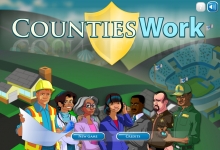 |
Counties Work12.G1 - Foundations of American Democracy | 4.4 - Government | 2.8 - Challenges in Community Economies Do you want to make your community a better place to live? In Counties Work, you decide about the programs and services that affect everyone! Your choices shape the community, and your citizens’ satisfaction determines whether you’ll get re-elected for a second term. Choose wisely. |
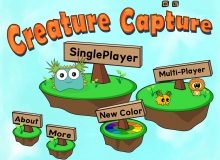 |
Creature Capture5 Math 2 - Multi-Digit Whole Number and Decimal... | 5 Math 3 - Addition and Subtraction of Fractions | 5 Math 4 - Multiplication and Division of... | 3 Math 5 - Fractions as Numbers on the Number Line | 4 Math 5 - Fraction Equivalence, Ordering, and... | 4 Math 6 - Decimal Fractions | 2 Math 8 - Time, Shapes, and Fractions as Equal... Creature Capture is a fun and colorful fraction-based card game where the goal of the game is to own more of the board than your opponent! Players engage in both solo and multiplayer gameplay as they collect cards and build strategies. Opponents take turns playing their creature-themed cards to a central board, causing battles between opposing cards along the way. The victor of each battle is determined by one of three battle rules: largest number wins, smallest number wins, and closest number to ½ wins. Players can use power cards to augment any creature, allowing them to perform complex fraction-based arithmetic to win battles. Additionally, players build decks from the cards they have collected and challenge their friends to a Creature Capture duel! These duels can be played online or offline. Creature Capture currently features over 30 levels, with new levels and features on the way. |
|
|
Destruct 34 M3A - Simple Machines: Force and Motion One player builds a block tower in the center of the board, then the other players attempt to destroy the stack using either a ramp, catapult, or pendulum. The destruction method each player uses is determined by a die roll. Points are awarded to players (including tower builder) based on how successful/unsuccessful the destruction attempts are. Tower building duties rotate among players. First player to reach the end of the scoring track wins. |
 |
Diplomacy10.5 - Unresolved Global Conflict 1914-1945 At the turn of the 20th century, the seven Great European Powers engage in an intricate struggle for supremacy. Military forces invade and withdraw, shifting borders and altering empires with subtle maneuvers and daring gambits. Form alliances and unhatch your traitorous plots as you negotiate and outwit—in a delicate balance of cooperation and competition—to gain dominance of the continent! In Diplomacy, your success hinges not on the luck of the dice, but your cunning and cleverness. A wonderful detailed account of how a classroom teacher is using Diplomacy with his classroom, including videos can be found here. A large listing of variants that cover varying player numbers, time frames and geographical locales can be found here. |
 |
Do I Have a Right?12.G2 - Civil Rights & Civil Liberties | 7.5 - The Constitution in Practice In Do I Have A Right?, you’ll run your own firm of lawyers who specialize in constitutional law. You’ll need to decide whether potential clients “have a right,” and if so, match them with the right lawyer. The more clients you serve and the more cases you win, the faster your law firm will grow! Can you think on your feet? You're going to have to! |
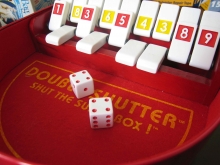 |
Double Shutter2 Math 1 - Sums and Differences to 20 Double Shutter is an enticing and irresistible game that combines tactical choices, luck and fun for the whole family. Roll two dice, add the dots and find the best combination of numbers to shut two rows of nine tiles. |
 |
Duck PuzzlePK D3 - Animals A layered puzzle that shows the life cycle of a duck. |
|
|
Elementary Math Escape Experience3 Math 1 - Properties of Multiplication and... | 3.OA - Operations and Algebraic Thinking | 3 Math 4 - Multiplication and Area | 3.MD - Measurement & Data | 3 Math 5 - Fractions as Numbers on the Number Line | 3 Math 6 - Collecting and Displaying Data The Chinese Cultural Museum is looking for volunteers to work at their prestigious institution. To help narrow down the competition, the museum has put together a series of puzzles and obstacles that interested applicants have to make their way through. Can the group use their understanding of Chinese Culture and math skills to make their way through and get the positions? This kit contains 3 identical escape kits to accommodate a whole class of students. The kit focuses on 3rd grade math curriculum while engaging students with Chinese culture and artifacts. |
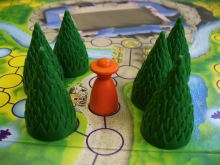 |
Enchanted Forest1 D9 - Fairy Tales This is a "memory" type game, where players explore the forest looking under trees and finding items from different fairy tales. Players need to find an item and get to the castle and reveal under which tree the item is located. The catch: the objective is ever changing, so players need to remember everything they found under the trees. |
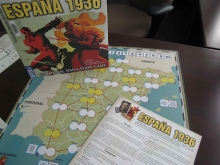 |
Espana 193610.5 - Unresolved Global Conflict 1914-1945 It’s 1936. While the rest of Europe is about to be hurled into a devastating era, a longstanding conflict in Spain begins to boil over into a bloody civil war. Unusual alliances form as Anarchists, Fascists, Communists, Monarchists, Arabs, Germans and Italians all take part in the division of the Iberian Peninsula. The events in Spain set the stage for what later played out in World War II, and whether you defeat the brutal fascist Franco or solidify his power, this is your chance to rewrite an important piece of world history... España 1936! In this game, players deploy troops and other resources, channel wily generals, and use foreign allies to control major regions of Spain. Everything happens while event cards simulate a clock pushing the game toward 1939. Both beginner and expert gamers will enjoy the complexity and pace of the game while learning about this important period in Spanish and world history. |
|
|
Expedition Dino1 D7 - The History of the Earth Tim the dinosaur researcher has come upon another find in Expedition Dino, and the players need to help him recover the bones, with one player being crowned as the best bone finder. To set up the game, the dinosaur figure is surrounded by rock cubes, each of which bear bone symbols on some of their sides. On a turn, the player will use the hammer and chisel to chip away at the rock pile, hoping that the cube will land bone-side up. If so, another find! Be careful with your picking, though. If you knock over Tim, make the dinosaur fall or pick off extra cubes, your turn ends. Collect more bones than anyone else, and you win the game. |
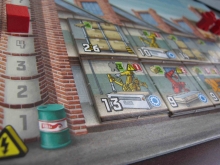 |
Factory Manager12.E2 - Individuals and Businesses in Markets Each player owns a factory and tries to earn the most money during the game. To be successful, each player must use his workers to buy the best machines and robots at the market and to run the machines most effectively in his factory. Because of increasing energy prices, the players must be careful to check the energy consumption of their factories and to avoid using only energy-consuming machines. Otherwise, their profit will suddenly vanish, the worst fear of a good businessman. |
 |
Founding Fathers7.4 - Development of the Constitution Your goal in Founding Fathers is to emerge from the Philadelphia Convention acknowledged by all as the true Father of the Constitution due to your outstanding contributions to the final document. ese contributions are measured by points on the scoring track, so you will want to ensure that you have more of these than anyone else by game's end. You can earn points in a variety of ways, such as by casting state delegations’ votes according to your plans in the Assembly Room, or by filling the Committee Room with your own loyal supporters. Points can also be earned by establishing yourself as the most vocal proponent of one of the Convention's powerful political factions, or simply by being the beneficiary of a favorable historical event. |
|
|
Freedom: The Underground Railroad11.3 - Expansion, Nationalism, and Sectionalism | 7.7 - Reform Movements Early in the history of the United States, slavery was an institution that seemed unmovable but with efforts of men and women across the country, it was toppled. In Freedom: The Underground Railroad, players are working to build up the strength of the Abolitionist movement through the use of notable figures and pivotal events. By raising support for the cause and moving slaves to freedom in Canada, the minds of Americans can be changed and the institution of slavery can be brought down. Freedom is a card-driven, cooperative game for one to four players in which the group is working for the abolitionist movement to help bring an end to slavery in the United States. The players use a combination of cards, which feature figures and events spanning from Early Independence until the Civil War, along with action tokens and the benefits of their role to impact the game. Players need to strike the right balance between freeing slaves from plantations in the south and raising funds which are desperately needed to allow the group to continue their abolitionist activities as well as strengthen the cause. The goal is not easy and in addition to people and events that can have a negative impact on the group's progress, there are also slave catchers roaming the board, reacting to the movements of the slaves on the board and hoping to catch the runaway slaves and send them back to the plantations. Through careful planning and working together, the group might see an end to slavery in their time. |
 |
Frog PuzzlePK D3 - Animals | 1 D8 - Animals and Habitats A layered puzzle that shows the life cycle of a frog. |
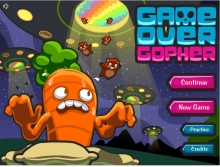 |
Game Over Gopher6 Math 3 - Rational Numbers | 8 Math 3 - Similarity | 5 Math 6 - Problem Solving with the Coordinate... Hungry gophers are after the prized carrot. Defend the carrot by placing units on a coordinate grid. A finalist in the 2012 Serious Games Showcase & Challenge. |
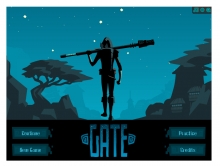 |
Gate4 Math 1 - Place Value, Rounding, and Algorithms... | 5 Math 1 - Place Value and Decimal Fractions | 2 Math 3 - Place Value, Counting, and Comparison... | 2 Math 4 - Addition and Subtraction Within 200... Shadows are corrupting the land. Restore the balance of nature by exploring place value. Gate guides students in: Lowering intimidation about large numbers and decimals. Understanding the meaning of place value. Realizing that the same mathematical concepts that apply to the "easy" integers apply to every order of magnitude. |
|
|
Giant Dwarf (Zwerg Riese)2 Math 2 - Addition and Subtraction of Length... Dwarves want gold. You know that, I know that, everyone knows that. But since their legs are short, walking from location to location to collect gold takes a long time – which is why they don't walk on their own, but instead use a giant for transportation. The only problem is that all the dwarves must share the same giant, which means you can't always get where you want. In Zwerg Riese, the dwarven players want to make use of their giantmobile in order to reach towns and claim the gold sitting there. (Why don't townspeople want the gold themselves? I'm hesitant to ask.) In order to move the giant, though, you must pay him a landscape card to match the land through which you're moving. You'll need to manage your hand of land cards carefully in order to keep moving and not let another dwarf take the gold you were eyeing. Zwerg Riese includes variant rules for more experienced dwarves, one that puts a storm cloud in play on the board. |
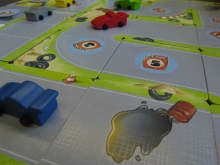 |
Go 0 to 100!3 Math 1 - Properties of Multiplication and... BRRRMMMM, the motors are revving. The red light jumps to green and the vehicles set off at full throttle. Watch out! Oil slicks on the circuit means the cars risk skidding. Which lucky player will be the best at bluffing and using good tactics to finish the round first? |
 |
Gopher It!K Math 1 - Numbers to 10 Who wants to win the Gopher Trophy prize? The player who does must be risky yet wise. Collect the Gopher snacks in ones, twos, and threes... and stop gathering food whenever you please. Get exactly six and not any more, to be the player with the highest score! |
|
|
Happy FarmK D5 - Farms | K.9 - Economic Needs and Wants In Happy Farm, players are to collect wooden pieces of pigs, chickens, and cows into families of two. The players throw a die to move across the board and collect animals; when they reach one of the two farmhouses, they may exchange the animals with each other. The first player to get two cows gets the tractor and is the winner of the game. |
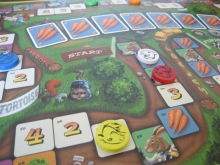 |
Hare & TortoiseALG I M3 - Linear and Exponential Functions This game features the legendary race between the hare and the tortoise, but with a twist. Each player plays both parts at different stages of the race. Sometimes it is best to race like rabbit; others, it is best to move slowly and cautiously like the turtle. In the end, it is the best combination of the two strategies that will win the race. Great fun for families, but also some serious strategy for serious players. |
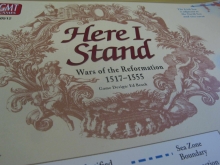 |
Here I Stand9.9 - Transformation of Western Europe and Russia Here I Stand: Wars of the Reformation (1517-1555) is the first game in over 25 years to cover the political and religious conflicts of early 16th Century Europe. Few realize that the greatest feats of Martin Luther, Jean Calvin, Ignatius Loyola, Henry VIII, Charles V, Francis I, Suleiman the Magnificent, Ferdinand Magellan, Hernando Cortes, and Nicolaus Copernicus all fall within this narrow 40-year period of history. This game covers all the action of the period using a unique card-driven game system that models both the political and religious conflicts of the period on a single point-to-point map. There are six main powers in the game, each with a unique path to victory. The Ottoman player needs to bring Christian Europe to their knees, either through a dominant military victory in Central Europe or by naval conquests and piracy in the Mediterranean. Their corsairs, based initially along the Barbary Coast of Africa, are the only units that can steal resources (cards, fleets, or victory points) from other players through piracy. The Hapsburgs begin the game in a dominant position, with Charles V inheriting lands in Castile, Aragon, Burgundy, the Netherlands and Austria. As the newly-elected Holy Roman Emperor, Charles is also in charge of the defense of Germany. However, the Hapsburgs are spread thin and threatened on all sides, tasked with defending Europe from the Ottomans, protecting Italy from the interests of the French, and cleansing Germany of the rapidly developing Lutheran heresy. Only through diplomatic finesse and the establishment of a New World empire will they be able to continue in their ascendant position. The English player, taking the role of Henry VIII, is tasked with securing his dynasty and raising the stature of England in European politics. The English start the game with the fewest cards of any power but can increase that through conquest of Scotland or colonizing the New World. They often serve as the swing player in the struggle between the Hapsburgs and French. The English player has to balance these interests with Henry's need to spend time securing a male heir (gained through rolls on the Henry's Wives' Pregnancy Chart). In the end, Henry is the key, for he is the one dynamic military leader the English possess but he can not marry a new wife if he is captured or under siege. The third participant in the race to the New World is the Valois dynasty of France, led by Francis I. Like the English and Hapsburgs, France gains both victory points and additional cards through conquest, colonization, and exploration of the New World. Francis is also a great patron of the arts, taking a great interest in the art and architecture of Italy while starting the long succession of French chateaux. French strategies in Here I Stand vary widely, for victory can come through any combination of points from New World exploits, chateaux-building, and conquest of European city-states. The final two powers, the Papacy and the Protestant, fight the religious struggle that occurs concurrently with the rest of the action. The initial move of the game sees Martin Luther posting his 95 Theses on the church in Wittenburg, typically flipping religious control of several nearby spaces to the Protestant player. Religious conflicts use a proximity system to model the likelihood of religious conversion. If Protestant spaces, reformers, and armies are adjacent to a city, the chance of those townspeople also adopting the new faith is increased. Catholic spaces, armies, and Jesuit universities allow the Papacy to halt the spread of the "heresy" and counter reform spaces back to the Catholic faith. The religious conflict system includes factors such as the publication of biblical translations in one language at a time, the benefits of the printing press, and landmark events in the history of the Reformation such as the Diet of Worms and the Council of Trent. If one side finds itself blocked from advancement, they can raise the stakes and call a theological debate. Here the leading Protestant reformers meet the Papal legates in a battle of words, with the winner (measured by the number of debate "hits" rolled) gaining new converts. If the victory was lopsided, the loser suffers disgrace or death by burning at the stake. Progress toward victory for these two powers is measured by the number of areas under religious control and the number of enemy debaters burned or disgraced. Here I Stand is the first card-driven game to prominently feature secret deal-making. A true six-sided diplomatic struggle, the game places a heavy emphasis on successful alliance-building through negotiations that occur away from the table during the pre-turn Diplomacy Phase. Set during the period in which Niccolo Machiavelli published his masterpiece "The Prince," backstabbing is always possible, especially because the card deck is loaded with event and response cards that can be played by any power to disrupt the plans of the powers in the lead. |
|
|
High Society12.E1 - Individual Responsibility and the Economy In Reiner Knizia's High Society, players bid against each other to acquire the various trappings of wealth (positive-number and multiplier cards) while avoiding its pitfalls (negative number and divisor cards). While bidding, though, keep an eye on your remaining cash - at the end of the game, even though all those positive-number cards might add up to a win, the player with the least money isn't even considered for victory. |
|
|
High Treason!11.1 - Colonial Foundations Canada’s westward expansion was very different than that of the United States. In the U.S., conflict in the westward movement was between the White Man and the Native Indian, and a common language united U.S. settlers. Language, however, has divided Canada ever since General Wolfe united the country by arms at the Plains of Abraham. Canada’s settlers pushed westward, led by fur-traders and trappers who were predominately French Catholic. These pioneers intermarried with the Native Indians, producing a new race and a new culture – the Métis. When the Canadian government made treaties with Native Indians, the Métis, being neither Native nor White, did not receive any comparable consideration. Wanting to protect their rights against the remote Anglo-Protestant government in eastern Canada, resentment grew into rebellion in Manitoba's Red River Valley in 1869. Louis Riel led this resistance and forced the government into compromise, resulting in the Manitoba Act. Due to his participation in the rebellion and in the execution of English Protestant, Thomas Scott, Riel himself was forced to flee to the United States. While residing there, Riel obtained American citizenship. When trouble between the Métis and the government occurred further west, in Saskatchewan, the Métis recalled their former savior to lead them. Louis Riel and Gabriel Dumont, a local Métis leader, initially worked toward a peaceful solution for their grievances. However, this movement eventually grew into a resistance, known as the North West Resistance. The Conservative government in Ottawa amassed a military force to crush it, and finally did at the Battle of Batoche, 9 – 12 May, 1885. Gabriel Dumont fled to the United States; tried and hanged for High Treason was Louis Riel. There are many reasons why the first Riel resistance succeeded and the second failed. The westward expansion of the railroad allowed the federal government to deploy superior forces rapidly to the field. Riel himself embraced unorthodox religious views – views that alienated the Catholic Church and its devout supporters who were the key to his first resistance’s success. Now you enter the courtroom during those five fateful days of July, 1885, when the future of a country hung in the balance, and the defendant, Louis Riel, hanged in the aftermath. |
|
|
History of the World9.1 - Development of Civilization | 9.3 - Classical Civlizations | 6.5 - Comparative Classical Civilizations | 9.7 - Ottoman Empire and Ming Dynasty | 9.8 - Africa and the Americas Pre-1600 Take a ride through humankind's history with History of the World, a game of conquest and cunning for three to six players. Expand your empire as you command mighty empires at the height of their power from the dawn of civilization to the twentieth century. Each game offers an epic experience as great minds work toward technological advances, ambitious leaders inspire their citizens, and unpredictable calamities occur while empires rise and fall. |
 |
History Plunge4.3 - Colonial and Revolutionary Period in NY There are numerous games in every box of HistoryPlunge that can be customized for ages 8 – 108. Learn about the U.S. Presidents, important events in history, and notable people that shaped history. The game covers events from 1492 all the way up to the picture of the black hole. There are fast-paced race games, trivia games and strategy games. https://www.learningplunge.org/history-plunge-resources/ |
 |
Imperial10.4 - Imperialism Europe in the age of imperialism. International investors try to achieve the greatest influence in Europe. With their bonds, they control the politics of the six imperial nations: Austria-Hungary, Italy, France, Great Britain, the German Empire, and Russia. The nations erect factories, build fleets, and deploy armies. The investors watch as their nations expand, wage wars, levy taxes, and collect the proceeds. Since the European nations are under the shifting influence of different investors, new strategic alliances and conflicts arise between them again and again! Each player represents an international investor. Only he who succeeds in increasing his capital and gaining influence in the most powerful European nations will win the imperial competition. Imperial is a varied strategy game without the luck of dice or cards. Two to six players, from about twelve years and up, take on the role of imperial investors. |
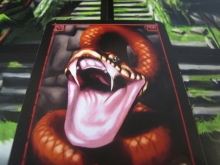 |
Incan Gold7 Math 5 - Statistics and Probability Players venture forth, as a group, into an abandoned temple looking for treasure. As they progress, they may encounter countless riches or unseen dangers. Players must decide after every step if they wish to venture further in search of more treasure, or if they want to turn around and leave with what they have. Those who continue on have the opportunity to increase their riches, but also run the risk of coming across two of the same danger, thereby losing everything. |
|
|
Labyrinth: The War on Terror, 2001-?11.11 - The US in a Globalizing World 2001: The “American Century” had closed with a single Cold War superpower standing and a pause in conflict that some at the time dubbed “The End of History”. It wasn’t. In the Middle East and South Asia, an Islamic revival was underway. Resentments bred in part of US support for the regions’ anti-Soviet tyrannies soon erupted into a new struggle against the West. Wealthy Saudi fanatic Usama bin Ladin issued a declaration of holy war against America in 1996 and then fired the first shots with spectacular terrorist attacks on US targets in East Africa in 1998 and the ArabPeninsula in 2000. Bin Ladin’s al-Qaeda organization plotted securely under the protection of the Taliban, a fundamentalist movement in Afghanistan born of the anti-Soviet “Bear Trap” of the 1980s. By 2001, al-Qaeda had set in motion even more devastating strikes — this time within the US Homeland — that Bin Ladin hoped would light off a global Muslim uprising. Uprising or no, the Western response to those September 11th attacks would reshape international affairs from London to Jakarta and from Moscow to Dar es Salaam. Labyrinth takes 1 or 2 players inside the Islamist jihad and the global war on terror. With broad scope, ease of play, and a never-ending variety of event combinations similar to GMT’s highly popular Twilight Struggle, Labyrinth portrays not only the US efforts to counter extremists’ use of terrorist tactics but the wider ideological struggle — guerrilla warfare, regime change, democratization, and much more. From the award-winning designer of Wilderness War and later Andean Abyss, Cuba Libre, and A Distant Plain, Labyrinth combines an emphasis on game play with multifaceted simulation spanning recent history and near future. In the 2-player game, one player takes the role of jihadists seeking to exploit world events and Islamic donations to spread fundamentalist rule over the Muslim world. The other player as the United States must neutralize terrorist cells while encouraging Muslim democratic reform to cut off extremism at its roots. With the game’s solitaire system, a single player as the US takes on ascending levels of challenge in defeating al-Qaeda and its allies. The jihadists must operate in a hostile environment — staying below the authorities’ radar while plotting terrorist attacks and building for the Muslim revolution. Will Iran’s Shia mullahs help or hinder the Sunni jihadists? Will the gradual spread of Islamist rule bring final victory — or will it be a sudden strike at the United States with an Islamic weapon of mass destruction? The United States has the full weight of its military force and diplomacy at the ready — but it can’t be everywhere: will technological and material superiority be enough? US forces can invade and topple Islamist regimes, but how will the Muslim “street” react? And if quagmire results, how will the US find its way out? Labyrinth features distinct operational options for each side that capture the asymmetrical nature of the conflict, while the event cards that drive its action pose a maze of political, religious, military, and economic issues. In the parallel wars of bombs and ideas, coordinated international effort is key — but terrorist opportunities to disrupt Western unity are many. The Towers have fallen, but the global struggle has only just begun. “Let’s roll!” |
|
|
Liberty or Death: The American Insurrection11.2 - Constitutional Foundations In Liberty or Death, one to four players take the roles of one or more Factions in North America: the British attempt to sup- press a distant insurrection throughout a massive region and across the sea; the Patriots try to incite rebellion through the population while fighting the British on their own terms; their Indian rivals cooperate with the British to limit the Patriots’ growth in and beyond the Colonies; and the French strive to confound the British in North America. By issuing Commands and utilizing a Faction’s Special Activities and various events, players assemble and maneuver forces to influence or control the population of the Colonies, generate Resources, and achieve their Faction’s objectives. Cards regulate turn order, events, and victory checks. |
 |
Marrakech7 Math 5 - Statistics and Probability The bazaar is bustling: it's the big day at the rug market! The best salesperson will soon be named! Each player is a salesperson who tries to outwit the others. Each player takes it in turns to throw the dice and then move Assam, the market organiser. If Assam stops on an opponent's rug, the salesperson must make a payment to its owner before putting one of their own rugs on an adjoining space. When the last rug has been laid, the total number of visible rugs and the number owned by each salesperson are added up: the best player wins! |
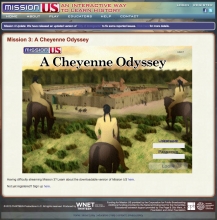 |
Mission US: A Cheyenne Odyssey7.1 - Native Americans | 3.3 - Geographic Influences on Settlements | 3.4 - Community/Cultural Histories | 2 D12 - Fighting For a Cause In Mission 3: “A Cheyenne Odyssey,” players become Little Fox, a Northern Cheyenne boy whose life is changed by the encroachment of white settlers, railroads, and U.S. military expeditions. As buffalo diminish and the U.S. expands westward, players experience the Cheyenne's persistence through conflict and national transformation. |
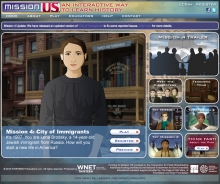 |
Mission US: City of Immigrants8.2 - A Changing Society | 5.5 - Comparative Cultures | 4.7 - Immigration and Migration In Mission 4: “City of Immigrants,” players navigate New York’s Lower East Side as Lena, a young Jewish immigrant from Russia. Trying to save money to bring her parents to America, she works long hours in a factory for little money and gets caught up in the growing labor movement. |
 |
Mission US: Flight to Freedom7.2 - Colonial Developments | 7 M3A - Slavery: The People Could Fly In Mission 2: “Flight to Freedom,” players take on the role of Lucy, a 14-year-old slave in Kentucky. As they navigate her escape and journey to Ohio, they discover that life in the “free” North is dangerous and difficult. In 1850, the Fugitive Slave Act brings disaster. Will Lucy ever truly be free? |
 |
Mission US: For Crown or Colony?7.3 - American Independence | 4 M3B - Perspectives on the American Revolution “For Crown or Colony?” puts players in the shoes of Nat Wheeler, a printer’s apprentice in 1770 Boston. They encounter both Patriots and Loyalists, and when rising tensions result in the Boston Massacre, they must choose where their loyalties lie. |
 |
Modern ArtPRE-CALC M5 - Probability and Statistics Buy your way to fame & fortune with Modern Art, the high stakes gallery auction game. Players compete to gain the most money by buying and selling paintings at auctions and reselling them for profit. Whoever offers the top bid owns the painting and sells it at the end of the round. The price the painting fetches is based on the popularity of the artist and how well his paintings have sold in the past. The player with the most money at the end of four rounds of buying and selling wins. |
 |
My Very First Game: Flower FairyPK D4 - Plants A cooperative stacking game to recognize and match colors. It’s springtime. The buds of the water lilies have already opened. Three big flowers are also growing up on the little island, but have not yet blossomed. Rosalina, in her little bed, is waking up. First she yawns, then stretches and sets off flittering from one water lily leaf to the next. As she arrives at the little island, she swings her magic wand ... and the three large flowers soon start to bloom. The goal is to build up the flowers before Rosalina reaches the flower island! On your turn you roll the die and take a piece of the same color. The first piece of a color goes on the same color flower field. The next pieces go on top of the previously placed pieces. The back of the board is a variant for older children. In this variant you don't have to recognize colors, but shapes. |
|
|
My Very First Game: LIttle GardenPK D4 - Plants Hurray, springtime has sprung again! Gardener Gabriel is overjoyed as he can finally get back to tending his garden. This year he wants to grow sweet strawberries, crunchy carrots and yellow tulips. Who wants to help him plant, water and weed the patches? Unfortunately Molly Mole is also busily burrowing her molehill. Who will be quicker: the children or Molly? |
|
|
Mystery Garden1 Unit 2 | 1 Unit 3 | K Unit 7 One player takes a card on which a picture is displayed which is also on the game board. The next player may ask one question which can only be answered with yes or no. In clockwise order the next player may ask a question and so on... Whether the answer to the question is yes or no, the playing-figure moves up one space in the direction of the castle. There are 15 spaces between the gate in front of the garden and the castle, so also 15 quest-ons that can be asked at maximum. It's forbidden to ask a question about the location of the picture on the game board. In stead of asking a question, a player may also say what picture is on the card when he thinks he knows it. If he is right, he earns the card which is one victory point at the end of the game. If no player knows what picture is on the card when the playing-figure reaches the castle, the player who took the card at the beginning earns it,and also a victory point. |
|
|
NationsNinth Social Studies From the humble beginnings of civilization through the historical ages of progress, mankind has lived, fought and built together in nations. Great nations protect and provide for their own, while fighting and competing against both other nations and nature itself. Nations must provide food and stability as the population increases. They must build a productive economy. And all the while, they must amaze the world with their great achievements to build up their heritage as the greatest nations in the history of mankind! Nations is an intense historical board game for 1-5 players that takes 40 minutes per player to play. Players control the fate of nations from their humble start in prehistoric times until the beginning of World War I. The nations constantly compete against each other and must balance immediate needs, long-term growth, threats, and opportunities. |
|
|
New York 19018.2 - A Changing Society | 4.6 - Westward Movement and Industrialization Relive the dawn of modern New York City, the historic years that made it what it is today. Build bigger and higher skyscrapers on some of Lower Manhattan's most iconic streets. Raise one of four legendary skyscrapers — the Park Row, the Singer, the Metropolitan Life, or the majestic Woolworth — and make one of them the crown jewel of your real estate empire! In New York 1901, the players are building skyscrapers on a map of New York's Financial District. Players take location cards from a cards' display and then use 2-3 of those location cards to place tetris-shaped building tiles on the board. They first build bronze level buildings. Later in the game those buildings can be replaced by silver level and then gold level buildings. |
|
|
New York Slice12.E2 - Individuals and Businesses in Markets | 12.E3 - Impact of American Capitalism on Global... | 4 Math 5 - Fraction Equivalence, Ordering, and... In New York Slice, each player slices pizzas into portions, giving their opponents first choice, while they take the leftovers. There are a dozen kinds of pizza to work with, from veggie to hawaiian to meat lover's, and each player decides if they want to eat or keep some of the slices, building the best collection of pizzas possible! Each time a player slices a pizza, there's a different special to go along with it, whether it's allocated to one of the portions or placed on its own. Specials provide the player with special powers or points, such as calling dibs on a slice before the pizza is divided, getting one of the normally-out-of-the-game "mystery slices', having an opportunity to "sneak a slice" by moving it from one portion to another when they choose, and many more—there are 14 different "Today's Specials" in the game. |
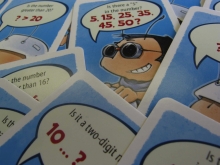 |
Number Chase6 Math 3 - Rational Numbers To chase down the number is your task. After each guess, you'll get to ask, "Is it even?" "Is is odd?" "Is it great?" Is it small?" "Is it a two-digit number?" "Is there a "5" at all?" Each clue that is read helps you to find, The number that other players have in mind! In each round a different player is the "Writer". The writer thinks of a number from 1 to 50 and secretly writes it down on a slip of paper. One at a time, each of the other players tries to guess the number. If the guess is wrong, the number is turned over to reveal a question, and the answer will be a clue to help out the other players. If the guess is correct, the player receives that number card as a point. The first person to collect three cards is the winner! |
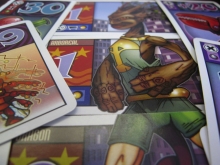 |
Numbers League3 Math 1 - Properties of Multiplication and... Numbers League - Adventures in Addiplication is a stand alone superhero themed card game where your basic math skills can save the day. The more you play the sharper these skills will become until no villain is safe from your numerical onslaught. The Infinity Level Expansion is included which increases the difficulty by introducing decimals to the equation! |
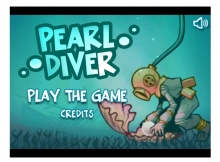 |
Pearl Diver5 Math 1 - Place Value and Decimal Fractions | 2 Math 2 - Addition and Subtraction of Length... | 5 Math 2 - Multi-Digit Whole Number and Decimal... | 5 Math 3 - Addition and Subtraction of Fractions | 3 Math 5 - Fractions as Numbers on the Number Line | 4 Math 6 - Decimal Fractions | 2 Math 8 - Time, Shapes, and Fractions as Equal... Navigate the number line while diving among shipwrecks and sunken ruins. Will you find a pearl, or an old boot? Watch out for the electric eel! Pearl Diver teaches properties of numbers, how to plot numbers, how to visualize quantity on the number line, how to order numbers, and how to use the number line as a visual model for mathematical operations. |
|
|
Piece o Cake12.E2 - Individuals and Businesses in Markets | 12.E3 - Impact of American Capitalism on Global... | 4 Math 5 - Fraction Equivalence, Ordering, and... Everyone knows the cake rules: one person cuts,the other chooses. In this way, one makes the slices as equal as possible so that one does not end up with the short end. But this rule does not apply to "...aber bitte mit Sahne (...but please, with whipped cream)." Here a person can cleverly offer larger pieces to the others and still get the most in the end. 5 cakes with 11 slices of different varieties are divided. Each variety awards a different amount of points. One can immediately eat slices to guarantee a number of points, or collect them in the hope of scoring bonus points for having the most of that variety at the end of the game. Only skilled dividers with an eye on their opponents’ pieces can score the most points and win the game. |
 |
Piñata Fever1 Math 1 - Sums and Differences to 10 | 2 Math 1 - Sums and Differences to 20 | 6 Math 3 - Rational Numbers | 1 Math 4 - Place Value, Comparison, Addition/... | 3 Math 5 - Fractions as Numbers on the Number Line In this math game you’re the host of a crazy piñata party. To keep the party pumping you need to keep the candy jar topped up – and the only way to get more candy is by smashing piñatas! These colourful, goody-stuffed toys descend slowly from the top of the play area. You must move quickly to intercept them by adding and subtracting positive and negative numbers. Once in position, smash open the piñatas to release their tasty treats! Think fast because if you run out of candy, the party’s over! |
 |
Pirate Artithmetics3 Math 1 - Properties of Multiplication and... In search of the mysterious treasure of the famous Pirate Arithmeticus, the arithmetic pirates have landed on the treasure island. Equipped with an old treasure map they set off on their search; a hundred steps towards the North, then twenty steps towards the left, past the statue of the monkey and fifty steps in the direction of the pig palm tree. Once they have reached the target, the pirates dig down impatiently into the earth. There it is! A treasure chest brimming with gold coins. When it comes to dividing up the treasure, the pirates have to prove their arithmetical abilities as only the cleverest pirate gets the largest share of the booty. |
 |
Power Grid12.E2 - Individuals and Businesses in Markets | 10.9 - Globalization and Changing Environment Earning money with electric power? Earning lots of money with electric power? A very good idea!!! Should I use coal or oil to generate power in the old-fashioned way or will their be a shortage of those resources in the future? Will there be a future in burning garbage? Certainly nuclear power is very exciting and as long as the government will manage the waste there will be a lot of profit. Of course, you can use more ecological friendly power and be independent of resources. But will such power plants be powerful enough for the customers in the future? Naturally, you must watch your competitors to see what plants they build, which cities they have in their net, what resources they depend on, and what new plants they find interesting. |
 |
Power Grid Expansion Maps12.E2 - Individuals and Businesses in Markets These are expansion maps for the base game Power Grid and not a stand alone game. You will need to check out a copy Power Grid to use with these maps. Earning money with electric power? Earning lots of money with electric power? A very good idea!!! Should I use coal or oil to generate power in the old-fashioned way or will their be a shortage of those resources in the future? Will there be a future in burning garbage? Certainly nuclear power is very exciting and as long as the government will manage the waste there will be a lot of profit. Of course, you can use more ecological friendly power and be independent of resources. But will such power plants be powerful enough for the customers in the future? Naturally, you must watch your competitors to see what plants they build, which cities they have in their net, what resources they depend on, and what new plants they find interesting. |
|
|
Prime Climb2 Math 1 - Sums and Differences to 20 | 3 Math 1 - Properties of Multiplication and... | 3 Math 3 - Multiplication and Division with Units... | 4 Math 3 - Multi-Digit Multiplication and Division Prime Climb is a new board game that uses arithmetic to open a beautiful world of possibility. Players race to be the first to get to the center of the board while avoiding getting knocked back to the start by other players. Highlighting the power of the prime numbers, Prime Climb is mathematical, deep, creative, and fun. Each player controls two pawns that start at the 0 circle. Players take turns rolling two 10-sided dice and applying the values to their two pawns using any of the four basic arithmetic operations: addition, subtraction, multiplication, and division. The first to get both pawns into the 101 circle exactly wins the game! Be careful: if another player lands on you, you get sent back to the start. Along the way, players who land on the red circles collect Prime cards—some are helpful now, some are helpful later, and a few are trouble! One of the great innovations of Prime Climb is the coloring scheme. Each of the prime numbers less than 10 has its own color: 2 is orange, 3 is green, 5 is blue, and 7 is purple. After 10, each prime number is red. Any number that is not a prime is a mix of colors that corresponds to its prime factors. For example, 14 = 2 x 7, so the 14 circle is half orange and half purple. The color coding allows players a way to quickly analyze the factors and multiples of the numbers on the board. This helps players check their multiplication and division, and even allows kids who haven't yet learned multiplication to play the game. |
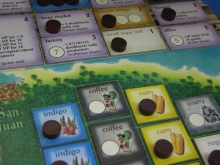 |
Puerto Rico11.1 - Colonial Foundations In 1493 Christoper Columbus discovered the eastern-most island of the Great Antilles. About 50 years later, Puerto Rico began to really blossom - through you! Which roles will you play in the new world: Prospector? Governor? Settler? Trader? Whatever you do, you have one goal: to achieve the greatest prosperity and the highest reputation! Who will have the most fruitful plantation? Who will build the most impressive buildings? And, who will earn the most victory points? |
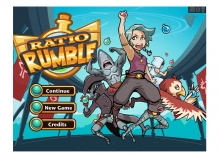 |
Ratio Rumble6 Math 1 - Ratios and Unit Rates | 7 Math 4 - Percent and Proportional Relationships The battle is on in this game where you build your own potions! Check your ratios to win this mixture mix-off! Ratio Rumble addresses equivalent ratios, as established by the National Council of Teachers of Mathematics (NCTM). |
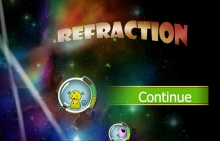 |
Refraction5 Math 2 - Multi-Digit Whole Number and Decimal... | 5 Math 3 - Addition and Subtraction of Fractions | 4 Math 5 - Fraction Equivalence, Ordering, and... | 4 Math 6 - Decimal Fractions Refraction is an online puzzle game for teaching fractions. The game requires knowledge of fractions to succeed. In Refraction, the player must partition lasers in order to power spaceships containing various animals who have gotten stuck in space. These animal spaceships all require different fractions of the lasers, and the player is given several pieces that split and bend the lasers to reach the animals and satisfy these requirements. These mechanics can be used to teach many important fraction concepts, such as equal partitioning, addition, multiplication, mixed numbers, improper fractions, and common denominators. The game itself is instrumented so that it records everything the player does, allowing teachers and researchers to analyze play data. |
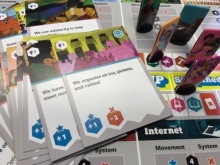 |
Rise Up: The Game of People & Power12.G4 - Political and Civic Participation | 11.10 - Social and Economic Change/Domestic Issues | 11.11 - The US in a Globalizing World Lead a march of thousands of people. Write a protest song that goes viral. Fight for what you believe in. Rise Up is a cooperative board game about building people power and taking on oppressive systems to create change. In Rise Up, the game weaves a story about your movement, which can either be based in reality (like stopping an oil pipeline) or fictional (like fighting for dragon rights). But “the System” is hard at work too, maneuvering to crush your efforts through tactics like setting up surveillance, making arrests, or causing infighting. In order to win, players must collaborate to build a movement that scores more victories than the system. To do this, players spend supporter tokens to use Movement Cards that allow them to grow their movement power on the ten different locations on the board (such as Workplaces, Campuses, Internet), take down the System’s power, as well as help their fellow players gain more supporters and cards. Players can strategize together by playing Movement Cards with matching symbols and starting a “chain of events,” which increases their impact. As your movement gains power, the system will retaliate with more cards of its own. Everyone loses if any one player runs out of supporter tokens, or if the system scores too many victories. Link to Standard Rules Video: http://www.toolboxfored.org/standardrules/ Link to Simplified Rules Video: http://www.toolboxfored.org/simplifiedrules/ |
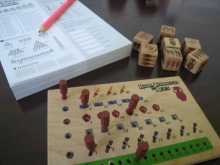 |
Roll Through the Ages: The Bronze Age6.3 - Early River Valley Civilizations Build a thriving civilization – in under an hour! Collect goods, assign workers to build cities and erect monuments, advance your civilization through cultural and scientific developments, but don't forget to harvest enough food to feed your growing population. This game is perfect for those who appreciate high quality components, medium-weight strategy and the chance to build through the Bronze Age. Grab those dice and Roll Through the Ages in this addictive and strategic new civilization game! |
 |
School! Ready, Set, Go!2 Math 8 - Time, Shapes, and Fractions as Equal... Come on, let's go to school! How exciting the everyday life of a school kid can be. Only the one who gets up promptly and is on time at the bus stop will get to school on time. There the hurly-burly continues. With all the other children and the interesting things to learn, the day passes in a flash. While playing, the children experience how their day will change when starting school. Further on, memory and handling of the clock are introduced in a playful way. Competitive and cooperative play variants included. |
|
|
Scrambled States of America Game4.1 - Geography of New York State | 2.5 Geography Shapes Communities Quick! Find a state that ends with the letter A. Now find one that borders Tennessee. Have fun learning about the United States in this madcap game of observation and quick reflexes. Collect state cards by matching them to a Scramble challenge. Or "Go the Distance" and find a state's closest neighbor. Win the most cards in The Scrambled States of America and call yourself the Head of States! |
|
|
Season Puzzle (Larger)K D8 - Seasons and Weather A layered puzzle exploring the changes in nature across the four seasons. |
|
|
Secret Code 13+42 Math 1 - Sums and Differences to 20 | 3 Math 1 - Properties of Multiplication and... | 1 Math 2 - Introduction to Place Value Through... | 3 Math 3 - Multiplication and Division with Units... Tonight is the night the secret mission "Amun Re" begins. The team, made up of four cunning secret agents, breaks into the museum and thanks to their precise calculations cracks the tricky codes of the security installation. Be it through addition or subtraction, multiplication or division, the numbers on the dice have to be combined so that the results coincide with the code numbers. Who in Secret Code 13+4 will be the first to overcome all the light barriers to get hold of the precious Amun Re mask? |
|
|
Smelly Molly (Moly Mief)Pre-K Math 1 - Counting to 5 Skunks are famous for clearing rooms. If you want a table at a trendy and crowded restaurant, for example, you know to bring a skunk along with you in order to clear the room. In-laws won't leave the table after Thanksgiving? Better break out the skunk. In Molly Mief, players go searching for the critters that scamper away when the eponymous Molly Mief goes for a stroll in the woods. At the start of each round, one player rolls the animal die to see which animal players want to find. Then someone turns over one of the 30 postcard-sized images in the game. When you think you know the right animal count, grab one of the five "track" cylinders – numbered 1-5 – from the table. Once everyone has grabbed a cylinder or passed, you see which player guessed the right number. That player claims the image card, and the first player to collect six cards wins. |
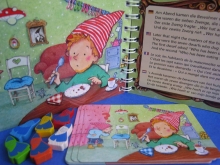 |
Something is Wrong!K D1 - Nursery Rhymes and Fables Something is Wrong! is an educational game based on the fairy tale "Snow White and the Seven Dwarves". The game includes a story book of the tale, and a set of cards that correspond to pages in the book. Players match the cards to the book pages and try to find the differences, and win one a wooden dwarf when they are the first to recognize the mistakes. A player wins when they collect two dwarves, but you can lose them too so the game as not as easy as it might sound! |
|
|
SpikyPre-K Math 1 - Counting to 5 One after another, you sense the dragons based on the number of spikes and let them come out of the bag. The dice decides on which dragon must be found. For each correct attempt you receive a flint stone. Using considerable concentration and sensitivity, you can be the first to win five flint stones. |
 |
Stone Age6.2 - Early Humans through Neolithic Revolution The times were hard indeed. Our ancestors worked with their legs and backs straining against wooden plows in the stony earth. Of course, progress did not stop with the wooden plow. People always searched for better tools and more productive plants to make their work more effective. In Stone Age, the players live in this time, just as our ancestors did. They collect wood, break stone, and wash their gold from the river. They trade freely, expand their village, and so achieve new levels of civilization. That is exciting and interesting. With a balance of luck and planning, the players compete for food in this pre-historic time. Risk and grow as your ancestors did. Only then the victory ring sings to you! |
|
|
Sum SwampPre-K Math 1 - Counting to 5 | K Math 3 - Comparison of Length, Weight, Capacity... Math becomes an adventure with this addition and subtraction game that takes kids on a journey through Sum Swamp. They’ll make their way over the crocodile shortcut and through the endless loop by adding and subtracting the numbers on the dice. Includes 12" x 17" game board, four swamp critter markers, two number dice and operation die |
 |
Supreme Decision12.G2 - Civil Rights & Civil Liberties | 7.5 - The Constitution in Practice Ever wondered how the Supreme Court really works? In Supreme Decision, you help cast the deciding vote. At stake is the suspension of Ben Brewer who wore his favor band t-shirt to school against dress policy. You’ll help the final Justice make up her mind and influence the outcome of the case! |
 |
The Color DwarvesPre-K Math 2 - Shapes The children walk with dwarf Colorful through the vivid Colorland. They visit the red dwarf, the green one ...Who will be the first to collect the presents? A fantastic educational game collection for 2-4 players about recognizing and classifying colors. Includes co-operative variation which also can be played solo. |
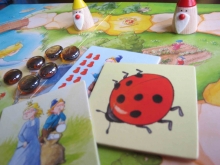 |
The Number Dwarves (Zahlenzwerge)Pre-K Math 1 - Counting to 5 The spritely imp, Hotchpotch, has buried precious treasures in the Land of Numbers. The number dwarves immediately set off to search for the mysterious treasure. By counting, they approach their target and sometimes the fairy Forget-Me-Not helps them. The cheeky imp however is not far and makes players participate in his nonsense. An entertaining and educational game of counting and planning. |
 |
The Princes of Machu Picchu5.2 - Complex Societies and Civilizations After the conquest of the Inca Empire by the Spanish invaders, only a few native princes managed to flee into the mountains. In Machu Picchu, a hidden city in the Andes, they build up a new peaceful society with their families. But beware: The Spanish are nearby and threaten to discover their last enclave! The Incas must use all their priests and virgins of the sun to acquire the help of the sun god Tayta Inti. Otherwise, the Spanish will ravage the sacred city looking for the prince who can offer the most gold. |
 |
The Wrecks FactorALG I M4 - Polynomial and Quadratic Expressions,... In this maths game you are the chief of rescue operations for the Bermuda Rectangle. Your task is to protect the ships crossing this notorious body of water, keeping watch for any vessels that fall prey to its strange and terrifying phenomena. Stricken ships will transmit their search area coordinates encoded as a quadratic expression. You must decipher the code before the ship sinks, and dispatch a rescue chopper to locate life rafts and save the crew. It’s a tough job but we know you can handle it, Chief! |
 |
This War of Mine10.6 - Unresolved Global Conflict 1945-1991 | 11.11 - The US in a Globalizing World This War Of Mine: The Board Game is the tabletop adaptation of the award-winning video game that pictures the drama of civilians trapped in a war-torn city. You will enter this experience as a group of civilians trapped in a besieged and conflict-ridden city, enduring many hardships that often test the essence of humanity. During day time you will take shelter in a ruined tenement house, which you will care about and manage by: removing rubble, searching through various rooms (often behind barricaded doors), you will build beds, improvised workshops, stoves, tools, water filters, small animal traps, you will cultivate an improvised vegetable garden, fix the tenements’ shelled facilities, reinforce the security of your shelter and should winter come, you’ll try to keep it warm. Upon nightfall your main duties will consist of guarding your shelter and what little possessions you can accumulate against bandits and raiders. Those in your group fit for such a task will use the cover of the night to carefully explore dozens of the ever-changing locations scattered throughout the dangerous city in search of all the things that a person needs to survive (materials, food, meds, equipment, etc.). On your way you will meet tens of characters, each with a unique story (residents of the locations you visit, thieves, bandits, soldiers, war victims, refugees, neighbors, traders and members of local communities), each encounter is a potential, unique adventure. To guide you through all these events you will have the special SCRIPTS mechanism, responsible for implementing the deep and complex story and a coherent plot (each game will be unique and different than the previous). Your goal is to SURVIVE until the cessation of war hostilities. During your struggle as the survivors, you will experience dramas connected with making extremely difficult decisions and choices (you will have to face the consequences of your actions sooner or later in the playthrough). Survival itself will often prove not to be enough. The price each of you will decide to pay, might be too high in the final outcome. So the goal is really to survive in a way that will let you live on with the decisions you made. The EPILOGUES mechanism will kick in here. TWOM: The Board Game features a multiplayer experience for up to 6 players, as well as a solo variant. You will be able to personify one of the well-known characters from the electronic version of the game and face hundreds of new challenges and difficult choices. The boardgame significantly broadens the original game’s universe and emphasises the depth of plot, yet its main focus will be on human interactions driven by survival instinct and group decision-making. The project aims to omit the usual boardgame threshold - TWOM: The Board Game is an INSTANT PLAY game, with no need for reading the manual before starting the adventure. Experience the simulation of a struggle for survival as a group of civilians facing a blind and merciless war. In war, not everyone is a soldier. |
|
|
Timeline: American HistoryEighth Social Studies | Eleventh Social Studies | Seventh Social Studies | Tenth Social Studies In Timeline: American History, players have hands of cards and take turns attempting to place the cards correctly into the growing timeline. Easy at first, but rapidly growing more difficult, Timeline: American History tests your knowledge and helps you learn the history of the nation. Which happened first: the Salem Witch Trials or the foundation of Harvard College? Was Watergate before Woodstock? Sure, it's easy to know whether the discovery of America came before the Deepwater Horizon oil spill, but how well can you remember everything that happened in between? |
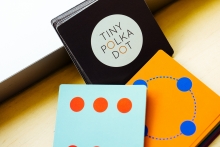 |
Tiny Polka DotK Math 1 - Numbers to 10 | K.CC - Counting & Cardinality | PK.CC - Counting & Cardinality | Pre-K Math 1 - Counting to 5 | K.OA - Operations & Algebraic Thinking | PK.OA - Operations & Algebraic Thinking | K.NBT - Number & Operations in Base Ten | K Math 4 - Number Pairs, Addition and Subtraction... Tiny Polka Dot cards come in six suits, each with eleven cards representing the numbers from 0 to 10. Each suit uses a different representation. These are Ten Frames, Big and Little Dots, Circles, Doubles Plus One, Numerals, and Dice Patterns. Tiny Polka Dot comes with 12 different games, designed to support kids as they develop flexibility, competence, and a love of numbers. |
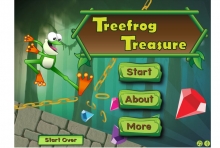 |
Treefrog Treasure3 Math 5 - Fractions as Numbers on the Number Line | 4 Math 6 - Decimal Fractions | 2 Math 8 - Time, Shapes, and Fractions as Equal... Treefrog Treasure (ages 4+) is a platformer game that allows players to explore different worlds as a frog and learn fractions and number line concepts. When certain obstacles are reached, a player must properly identify a target symbol, whole number, or fraction on a number line to collect gems and complete the level. Hints are provided to help the player reach the correct answer when mistakes are made. |
 |
Tribune: Primus Inter Pares9.3 - Classical Civlizations Bow down before the tribune, ye citizens of Rome. Rich and poor, strong and weak, patricians and plebeians, hear your tribune's words! In Tribune, the players belong to the large and ambitious patrician families of Rome, and thirst for influence and power. By exerting dominance over the city's various factions, they seek the highest office of the Republic, to demonstrate that they are the primus inter pares - the first among equals. Will you win over the legions, be crowned with laurel wreathes, incur the favor of the gods, and be made tribune? Make ready, and send your followers into the streets of Rome to win influential allies. The time has come to write history! |
|
|
Trinkets (Krims-krams)Pre-K Math 2 - Shapes What a mess! Squirrel Sammy Walnut likes to collect trinkets, and they are piled up all over the place in his home. The bicycle helment is in the refrigerator and the toothbrush underneath the sofa. It's time to clean up! But what will fit in which box? Only the one who helps Sammy to tidy up and find the corresponding boxes for the colors things will receive the valuable nut coins! In Trinkets, the players help Sammy to tidy up his trinkets. All the various things are different sizes, however, and each will fit only in one specific box. Sammy has to go from box to box to see what might fit and then place the corresponding piece. To get that nut coin as a reward, the item must fit perfectly. The first player to collect five nut coins wins! |
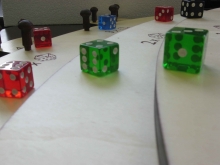 |
Tumblin' Dice3 Math 1 - Properties of Multiplication and... Put your skills and nerves to the test with Tumblin-Dice. One after the other you will propel your dice on the scoring track with a flick of your fingers as far as you can, while ejecting the competition if possible. The perfect flick will yield you 24 points with a "6" on the "4x" level, but don't take your score for granted. The other players will try to knock your dice off the scoring track with theirs. Once all the dice have been played the round is over and the scores are tallied. The first player or team to reach 301 wins the game. Lots of different variants for different levels of fun. |
 |
Twilight Struggle10.6 - Unresolved Global Conflict 1945-1991 In 1945, unlikely allies toppled Hitler's war machine, while humanity's most devastating weapons forced the Japanese Empire to its knees in a storm of fire. Where once there stood many great powers, there now stood only two - the United State and the Soviet Union. The world had scant months to collectively sigh in relief before a new conflict threatened. Unlike the titanic struggles of the preceding decades, this conflict would be waged not primarily by soldiers and tanks, but by spies and politicians, scientists and intellectuals, artists and traitors. Twilight Struggle is a two-player game simulating the 45 year dance of intrigue, prestige, and occasional flares of warfare between the USSR and the USA. The entire world is the stage on which these two titans fight. The game begins amidst the ruins of Europe as the two new superpowers scramble over the wreckage of WWII, and ends in 1989, when only the United States remained standing. |